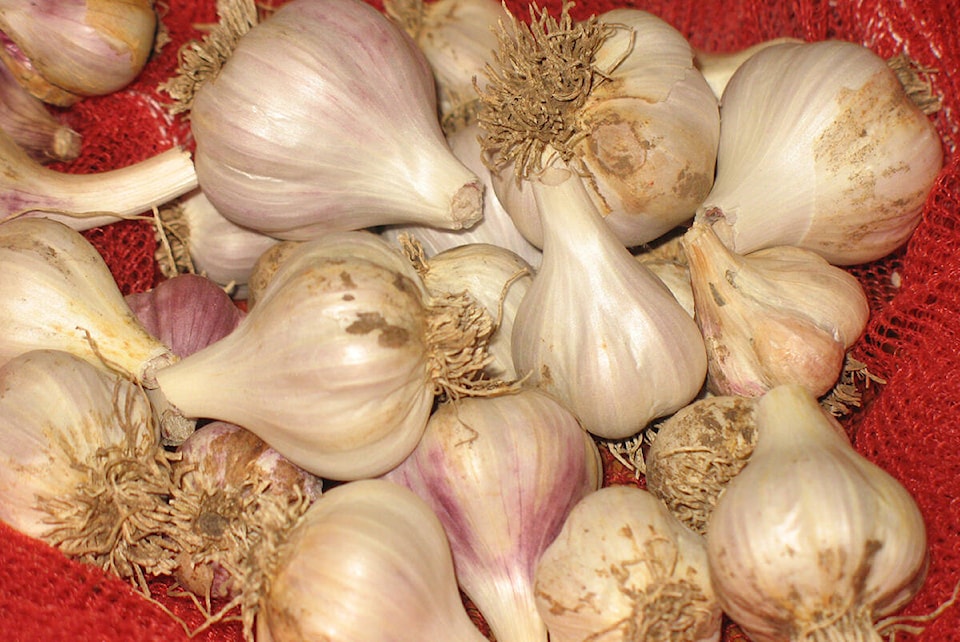September is almost over and if not started yet, it is time to get your garden ready for winter.
To start with, garlic should be planted now.
Fall is the best time to plant garlic so it will have time to develop some roots before winter. Sometimes the nice fall weather is extended and the garlic leaves are showing above soil.
Mulch the bed with at least four inches (10 centimetres) of shredded leaves and dry grass clippings or straw and it should be fine. Try not to grow your garlic in the same spot every year and amend your soil with compost.
The garlic you buy in the store may be treated and will not grow properly. Find a reliable source.
Do not break the bulbs down until one day before you are ready to plant and do not remove the paper shell from each clove. Always plant the largest ones and keep the smaller ones for cooking.
The larger the cloves, the larger the bulbs will be next summer for harvest.
Make sure you plant the cloves with the roots down (it is the flat side) and the pointy end up about two inches (five cm) deep and in single or double row with four to eight inches (10 to 20 cm) between.
On Oct. 1, 2019, we had the first frost of that season and it put a stop to my fig plants.
This year, because of the heat of July and August, they have been doing so good that as of Sept. 19, I have harvested already 15 very ripe and juicy fruits of three different varieties: Black Spanish, LSU Gold and Italian Honey.
I will put the row cover over the plants to protect them from the cold at night with the hope of getting another dozen ripe fruits.
According to the Old Farmer’s Almanac, the first fall frost might come around Oct. 8. On frost calendars, the freeze severity is listed.
Light freeze -2 C to 0 C kills only tender plants, moderate freeze -4 to -2 C) will be widely destructive to plants and fruits, and severe freeze -4 C and colder damages most plants.
So, keep a close eye on the daily weather forecast.
If it looks like temperatures are going to drop, get ready to protect tender plants.
Moisture also determines whether frost will nip your plants. Condensation warms and evaporation cools. When moisture in the air condenses on plants and soil, heat is produced, sometimes raising the temperature enough to save the plants.
On the other hand, if the air is dry, moisture in the soil will evaporate, removing some heat.
Also, the first frosts of the season usually happen on clear, calm nights.
Frost protection is especially important for tender plants such as tropical houseplants, succulents, begonias, impatiens, peppers and tomatoes.
Other tender crops that can’t withstand frost include eggplant, beans, cucumber, sweet corn, squash and melons.
If you can’t protect sensitive crops like tomatoes, harvest them early. Green tomatoes don’t need light to ripen, and in fact, ripening can be slowed by light. Keep fruit between 12 C and 20 C for best ripening.
Beets, carrots, lettuce, cauliflower and potatoes will withstand a light frost. Cool-season crops such as cabbage, broccoli, onions, parsley, peas, radish, spinach, turnips and Brussels sprouts will withstand a hard frost.
At the first sign of frost, cover your plants at night and remove the cover in the morning for them to enjoy the sun https://www.almanac.com/protecting-your-garden-frost?.
For more information: call 250-558-4556; email jocelynesewell@gmail.com.
